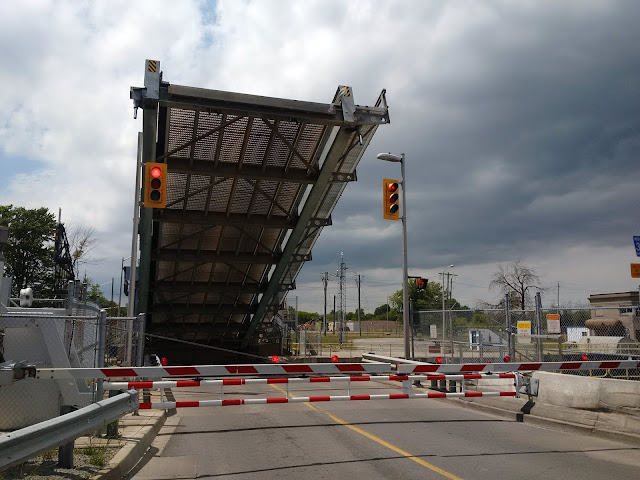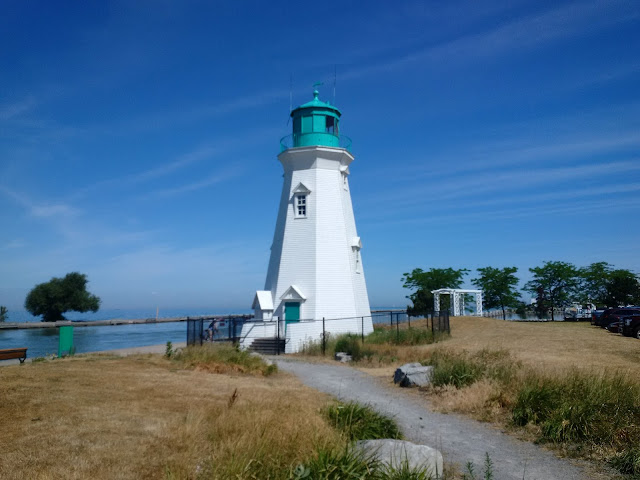The GO train did not have their bike cars on Friday evening; meaning exceeding the bike limits per train car was inevitable. With such high demand – a report called “Investigating Impacts of Cycle Tourism in Ontario” cited the Niagara Region was Ontario’s second most popular cycle tourism destination after Toronto[1] – GO Transit may want to address this. The Niagara trains are differentiated from Lakeshore West by only stopping at Exhibition, Port Credit (Mississauga), Oakville, and Burlington before continuing to St. Catharines and Niagara Falls. The trip took two hours and cost just under $40 round trip with a PRESTO card. The HI-Niagara Falls hostel we stayed at that night was near the train station and offered bike parking downstairs. To seal the night, we arrived just in time for fireworks at the falls.
 |
| Peace Bridge to Buffalo, New York |
 |
| Along the Friendship Trail |
 |
| Lift bridge in operation at Port Colborne |
Brock University is your best bet for low cost lodging if travelling solo. The rooms were bog style (two people sharing a bathroom), decently furnished, and offered ring and post parking. Throw in $5 – 10 extra for breakfast – Tim’s and McDonald’s are nearby – and you are still paying considerably less than nearby bed and breakfasts, which are more appropriate if travelling with a partner or family. The university’s architecture has a modernist style and is isolated from Thorold and St. Catharines; requiring a 20 – 30 minute walk or 10 minute bike ride. In spite of this, stopping at Cab’s Caboose was worthwhile with their delicious chicken pot pie and reasonably priced craft beer.
 |
| Lighthouse at Port Dalhousie |
 |
| Peller Estate Winery was along our route |
 |
| Inside GO Transit's BikeTrain cars |
Tour on!
Rob Z (e-mail)
Follow @RZaichkowski
---
[1] Burns, H., McCulloch, M. & Dodds, R. (2015) “Investigating Impacts Of Cycle Tourism in Ontario”. TTRA Canada Conference. Niagara Falls, Canada, September 23-25, 2015. https://www.academia.edu/22349401/Investigating_Impacts_Of_Cycle_Tourism_On_Ontario




No comments:
Post a Comment